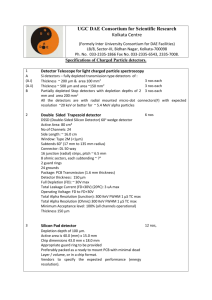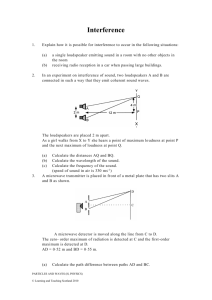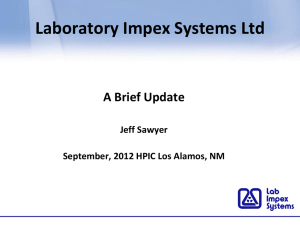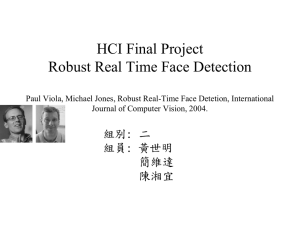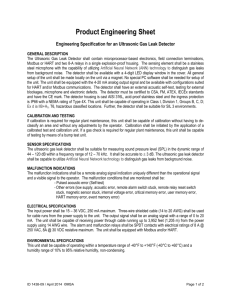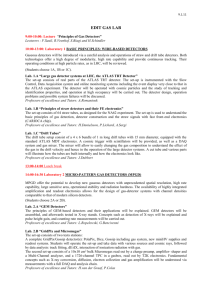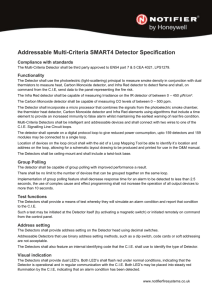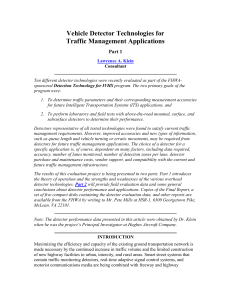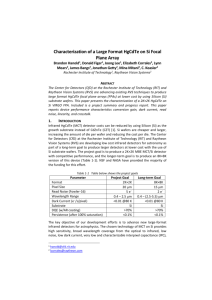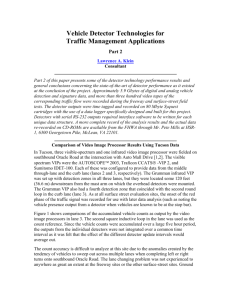Vehicle Detectors
advertisement
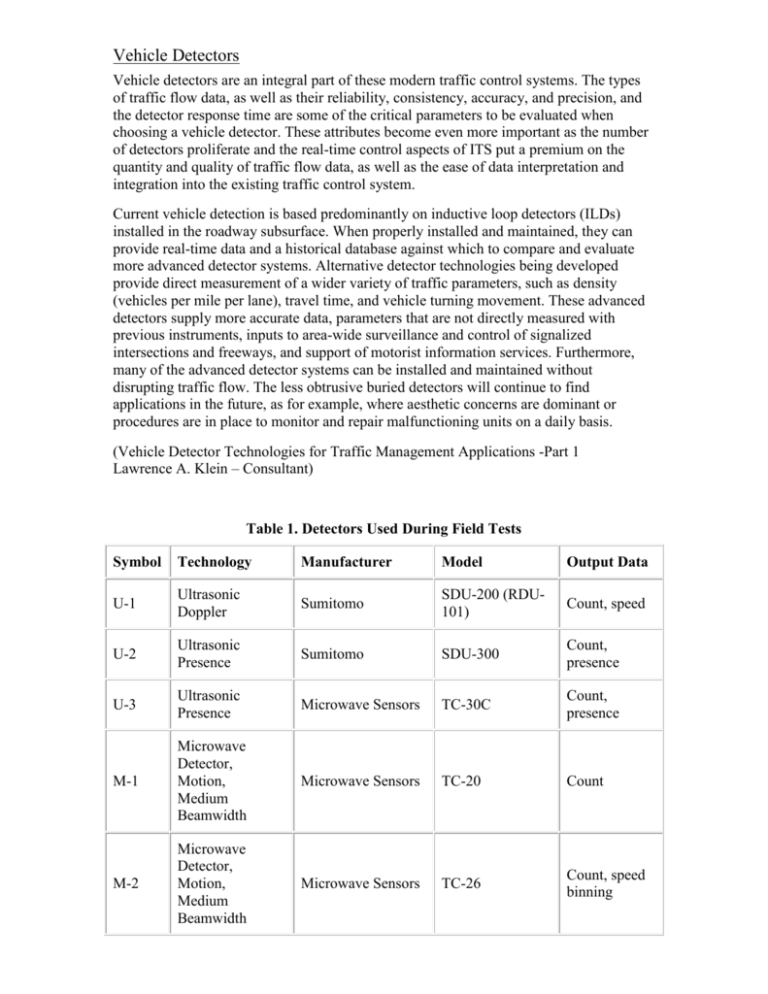
Vehicle Detectors Vehicle detectors are an integral part of these modern traffic control systems. The types of traffic flow data, as well as their reliability, consistency, accuracy, and precision, and the detector response time are some of the critical parameters to be evaluated when choosing a vehicle detector. These attributes become even more important as the number of detectors proliferate and the real-time control aspects of ITS put a premium on the quantity and quality of traffic flow data, as well as the ease of data interpretation and integration into the existing traffic control system. Current vehicle detection is based predominantly on inductive loop detectors (ILDs) installed in the roadway subsurface. When properly installed and maintained, they can provide real-time data and a historical database against which to compare and evaluate more advanced detector systems. Alternative detector technologies being developed provide direct measurement of a wider variety of traffic parameters, such as density (vehicles per mile per lane), travel time, and vehicle turning movement. These advanced detectors supply more accurate data, parameters that are not directly measured with previous instruments, inputs to area-wide surveillance and control of signalized intersections and freeways, and support of motorist information services. Furthermore, many of the advanced detector systems can be installed and maintained without disrupting traffic flow. The less obtrusive buried detectors will continue to find applications in the future, as for example, where aesthetic concerns are dominant or procedures are in place to monitor and repair malfunctioning units on a daily basis. (Vehicle Detector Technologies for Traffic Management Applications -Part 1 Lawrence A. Klein – Consultant) Table 1. Detectors Used During Field Tests Symbol Technology Manufacturer Model Output Data U-1 Ultrasonic Doppler Sumitomo SDU-200 (RDU101) Count, speed U-2 Ultrasonic Presence Sumitomo SDU-300 Count, presence U-3 Ultrasonic Presence Microwave Sensors TC-30C Count, presence M-1 Microwave Detector, Motion, Medium Beamwidth Microwave Sensors TC-20 Count M-2 Microwave Detector, Motion, Medium Beamwidth Microwave Sensors TC-26 Count, speed binning M-4a Microwave Detector, Motion, Narrow Beamwidth Whelen TDN-30 Count, speed M-5 Microwave Detector, Motion, Wide Beamwidth Whelen TDW-10 Count, speed M-6 Microwave Radar, Narrow Beamwidth Electronic Integrated Systems RTMS-X1 Count, presence speed, occupancy IR-1 Active IR, Laser Radar Schwartz Electro-Optics 780D1000 (Autosense I) Count, presence, speed IR-2 Passive IR Presence Eltec 842 Count, presence IR-3 Passive IR Pulse Output Eltec 833 Count IR-4 b Imaging IR Grumman Traffic Sensor Presence, speed VIP-1 Video Image Processor Econolite AUTOSCOPE 2003 d VIP-2 Video Image Processor Computer Recognition Systems Traffic Analysis System d VIP-3 e Video Image Processor Traficon CCATS -VIP 2 d VIP-4b Video Image Processor Sumitomo IDET-100 d VIP-5 c Video Image Processor EVA 2000 d A-1f Passive Acoustic Array AT&T SmartSonic TSS-1 Count MA-1 Magnetometer Midian Electronics Self Powered Vehicle Detector Count, presence L-1 b Microloop 3M 701 Count, presence T-1b Tube-Type Vehicle Counter Timemark Delta 1 Count a M-3 was designated for a microwave radar detector that was not received. b Used at Tucson Arizona test site only. c Used in Phoenix Arizona 7/94 test only. d Count, presence, occupancy, speed, classification based on length. Some provide headway, density, and alarm functions. e Used at all Arizona test sites. f Used in Phoenix 11/93 and Tucson tests.
